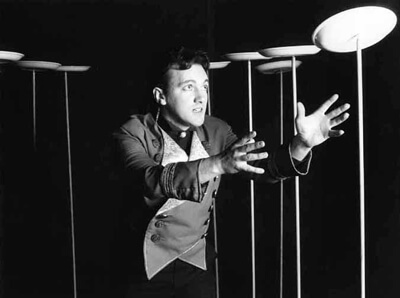 When I was growing up in Southern California, our family gathered around the black-and-white TV set on Sunday nights in Southern California to watch The Ed Sullivan Show. Sullivan hosted a variety program that exposed American audiences to dozens of stars, novelty acts, and bands – from all over the world.
When I was growing up in Southern California, our family gathered around the black-and-white TV set on Sunday nights in Southern California to watch The Ed Sullivan Show. Sullivan hosted a variety program that exposed American audiences to dozens of stars, novelty acts, and bands – from all over the world.One particular act made quite the impression on me. A vaudeville performer came out on stage where there were at least sixty five-foot-tall dowels in stands. This gentleman spent 3 minutes SPINNING PLATES on the end of these dowels. ON NATIONAL TELEVISION. Watching this guy, I was convinced that I, too, could be a big star! (That never quite worked out for me.)
Every one of us – from senior leaders to front line staff – spin plates at work. The plates we spin might be key goals and tasks we’ve been charged with. Our plates might also include teamwork, good corporate citizenship, office politics, putting up with stupid policies and procedures, etc. Our spinning plates are positive things and not-so-positive things.
Though the economy is improving, staffing has become leaner in many municipal, state, and federal offices. Running lean means all staff spin even more plates than before.
We spend a great deal of time at work trying to keep all these plates spinning. It’s no wonder many people leave work at the end of their day or shift exhausted.
Every player in an organization needs to proactively evaluate whether or not they are spinning plates that no longer serve their functional team, their organization, or even their customers. Often team members don’t realize that they are investing valuable time in activities that do not actually provide value. They’re doing things because “they’ve always done it that way.”
How does one know which plates deserve the time, energy, and brain cells you’re expending?
Consider these key elements to assess which plates deserve your attention:
- Do these activities align with your organization’s core purpose & values? Every organization needs to have a stated “reason for being,” a statement that describes what it does, for whom, and “to what end.” In addition, every organization needs to define HOW it will go about delivering on their “promise,” their reason for being. With these statements in place, they can be used as the foundation for assessing what activities deserve time, energy, and focus. If activities do not have a direct positive impact on the daily demonstration of organization’s core purpose and values, those activities may not deserve your attention.
- Do these activities align with your organization’s defined strategies and goals? With clearly defined strategies and goals communicated and agreed to, one can evaluate the extent to which daily activities contribute to traction on those targets. If activities do not demonstrate direct benefit to defined strategies or help goals get accomplished, consider them for the “don’t do” pile.
- Do these activities align with your personal purpose & values? With your personal purpose & values defined, you can assess the degree of alignment you have with your organization’s purpose and values. You can assess the degree of alignment with the organization’s strategies and goals. If you find strong alignment, you’ll more likely be energized at the end of the day. If you find poor alignment, you may choose to find a more aligned role in a different function or division.
If these foundational pieces are NOT in place, EVERY ACTIVITY may seem beneficial. Do the analysis and invest in beneficial activities.
What is your experience with “spinning plates” in the workplace? Add your thoughts in the comments section below.